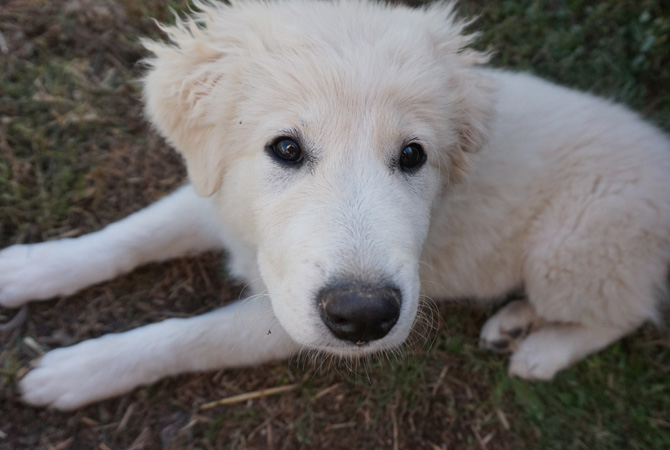Over the last decade or so the Royal Society for the Prevention of Cruelty to Animals (RSPCA) has attempted to raise awareness of animal hoarding. Certainly, it is a serious animal welfare issue that is happening within Australian communities.
Understanding more about animal hoarding and the common characteristics of those people involved may go some way towards stamping out the problem. At the very least, having more conversations about animal hoarding will help shine a light on the issue.
What exactly is animal hoarding?
Firstly, it’s important to note that animal hoarding is not the same as operating a puppy farm. Animal hoarders are often animal lovers. However, they often have mental health issues; they are believed to have addictive and compulsive disorders.
In his paper, entitled ‘Animal hoarders in Australia — shining light through dark shades’, Dr Mark Lawrie (RSPCA NSW) explains, “Animal hoarders are people who accumulate more animals than they can possibly care for. Research from the US would indicate that they probably exist in every community (Patronek, 1999). Animal hoarders may even be thought of as animal lovers in their local community but the reality is very different. Typically they live a reclusive life in appalling filth and squalor with an ever-increasing number of grossly neglected, starving, ill and dying animals, whose most basic needs are not being met (Patronek, 2001).”
According to the American Society for the Prevention of Cruelty to Animals (ASPCA), an animal hoarder is an individual who houses more animals than they can adequately care for. While hoarders often believe they are rescuing or saving animals, they are unable to provide minimal standards of nutrition, shelter, sanitation and veterinary care. Sadly, this can result in animal starvation, malnutrition, disease and death.
What have we learned from profiling hoarders?
Certainly, much more is known about animal hoarders in the US. Extensive profiling has been conducted to learn about hoarders’ traits. However, studies conducted in Australia reveal that the ‘average’ hoarder is typically female and middle-aged to elderly. Cats are most commonly hoarded (50% of cases) followed by dogs (23% of cases).
Hoarding is usually a result of the desire to be needed. As such, it may come after a traumatic life event such as a divorce, kids leaving home, or the loss of a job. It’s likely the person is unemployed and they may have a mental health disorder.
In most cases, the hoarder lives alone or with one other person, such as a partner. It is not uncommon for hoarders to live in homes that lack basic utilities, such as water and electricity. These factors can result in sanitation issues.
Hoarders tend to be secretive, deceptive and remain socially isolated from the community. Because of these factors, the prevalence of animal hoarding is largely underestimated.
Warning signs
In many cases, veterinarians may be one of the few people a hoarder sees or speaks to. As such, vets are well placed to identify and help prevent a hoarding situation. Warning signs to be on the lookout for include:
- A large number of pets, most of which have only been to the vet once
- When questioned about his or her pets, he or she is vague or evasive
- The person appears to neglect himself or herself
- Claims to have found or rescued an animal who is dirty or emaciated
- The individual is likely to insist the animal is fine and healthy, despite signs to show otherwise
Putting an end to animal hoarding
There’s no denying animal hoarders need help. Often they are dealing with mental health problems and don’t have the adequate support they need. What’s more, hoarding not only negatively impacts the animals, but also the hoarder and surrounding neighbours.
The RSPCA states, “The key to preventing animals from suffering due to hoarding, is for relevant agencies to work together to identify cases early, to intervene quickly and to provide support to hoarders to prevent recurrence.”
Hoarding is a difficult situation to deal with, particularly as current legislation is inadequate. However, pet professionals can help by identifying potential hoarder cases and attempting to intervene. The RSPCA NSW acknowledges that hoarders have been convinced to surrender animals through negotiation and understanding in some cases.
How you can help
The following tips come from the ASPCA.
Reassure the animal hoarder that it’s okay to accept help. Animal hoarders are usually worried that their animals will be killed or that they will never see them again. Regardless of the outcome, assure them that the animals need urgent care and that immediate action is necessary.
Volunteer your time. With the removal of so many animals from a hoarding situation, the burden on local shelters can be staggering. Volunteer your time to help clean cages, socialize animals, walk dogs and perform other such necessary duties.
Keep in touch. It may be appropriate for animals to be spayed and neutered and returned to their home if an animal hoarder can provide—or can be aided in providing—care. Under the guidance of an organization, help the individual with daily animal care chores. And if the individual acquires new animals, help ensure that they are spayed/neutered and vaccinated.
In addition, vets can discuss the importance of desexing animals. You might even offer the service for free in a commitment to the welfare of our animals in Australia.
Have you ever encountered an animal hoarder?
Information resources
Dr M Lawrie. Animal hoarders in Australia — shining light through dark shades. 2005. Accessed online via: https://aiam.org.au/resources/Documents/2005%20UAM/PUB_Pro05_MarkLawrie_AnimalHoarders.pdf
Ockenden E et al. Animal Hoarding in Victoria, Australia: An Exploratory Study. March 2014. Anthrozoos A Multidisciplinary Journal of The Interactions of People & Animals 27(1): 33.47. Accessed online via: https://doi.org/10.2752/175303714X13837396326332
Latest posts by Liz Walden (see all)
- Pet health: Medicinal cannabis for pets - December 27, 2021
- What pet business insurance do I need? - November 17, 2021
- Pet sitters: how to take time off - November 15, 2021










Leave A Comment